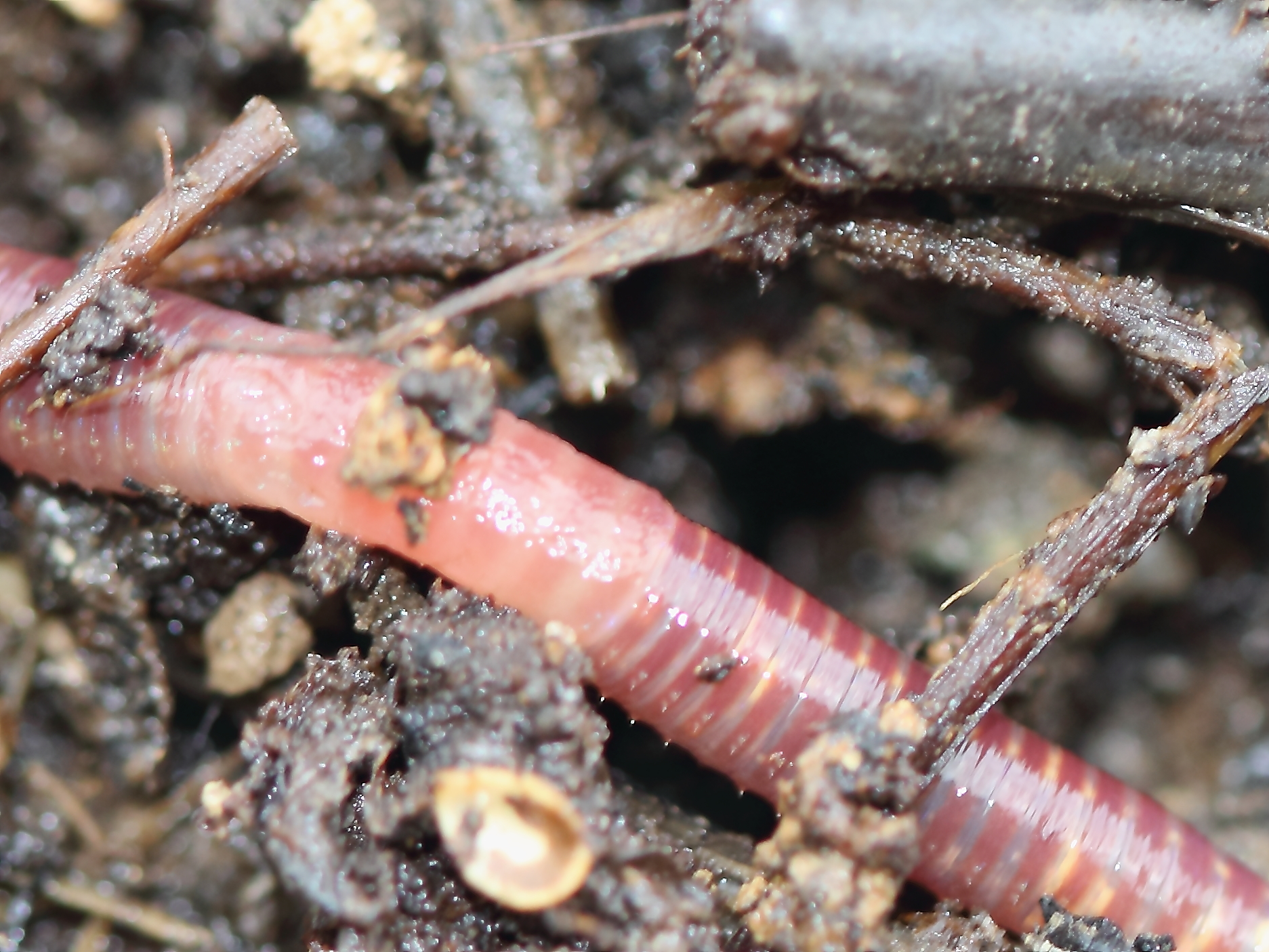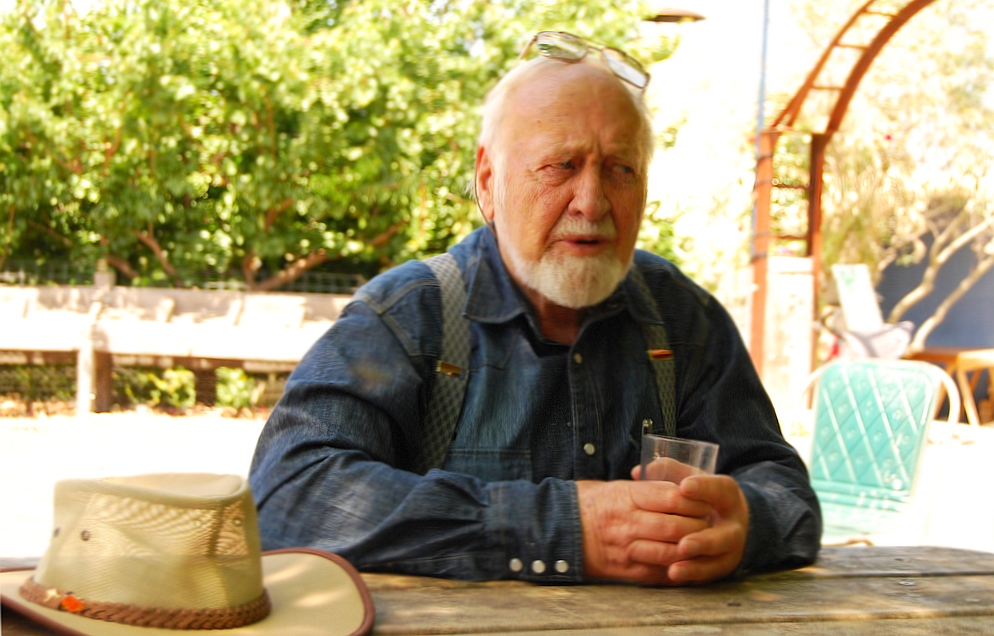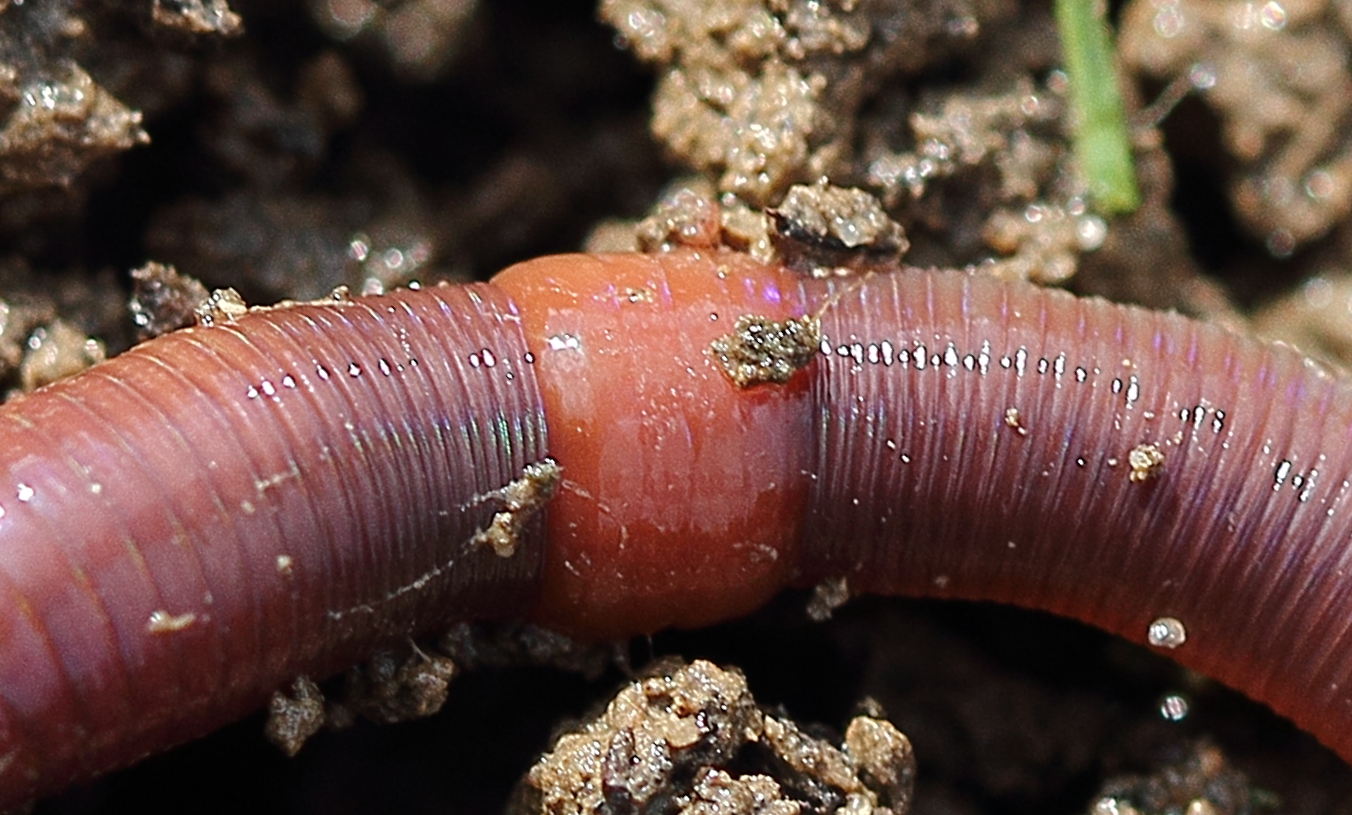|
Vermicompost
Vermicompost (vermi-compost) is the product of the decomposition process using various species of worms, usually red wigglers, white worms, and other earthworms, to create a mixture of decomposing vegetable or food waste, bedding materials, and vermicast. This process is called vermicomposting, while the rearing of worms for this purpose is called vermiculture. Vermicast (also called worm castings, worm humus, worm manure, or worm faeces) is the end-product of the breakdown of organic matter by earthworms. These excreta have been shown to contain reduced levels of contaminants and a higher saturation of nutrients than the organic materials before vermicomposting. Vermicompost contains water-soluble nutrients and is an excellent, nutrient-rich organic fertilizer and soil conditioner.Coyne, Kelly and Erik Knutzen. ''The Urban Homestead: Your Guide to Self-Sufficient Living in the Heart of the City.'' Port Townsend: Process Self Reliance Series, 2008. It is used in gardening and ... [...More Info...] [...Related Items...] OR: [Wikipedia] [Google] [Baidu] |
Vermifilter
A vermifilter (also vermi-digester or lumbrifilter) is an aerobic treatment system, consisting of a Bioreactor, biological reactor containing media that filters Organic matter, organic material from wastewater. The media also provides a habitat for Aerobic organism, aerobic bacteria and Vermicompost#Suitable worm species, composting earthworms that purify the wastewater by removing pathogens and Biochemical oxygen demand, oxygen demand. The "trickling action" of the wastewater through the media Dissolved Oxygen, dissolves oxygen into the wastewater, ensuring the treatment environment is aerobic for rapid decomposition of organic substances. Vermifilters are most commonly used for sewage treatment and for agro-industrial wastewater treatment. Vermifilters can be used for Secondary treatment#Primary treatment, primary, Secondary treatment, secondary and Secondary treatment#Tertiary treatment, tertiary treatment of sewage, including Blackwater (waste), blackwater and greywater in Ons ... [...More Info...] [...Related Items...] OR: [Wikipedia] [Google] [Baidu] |
Eisenia Fetida
''Eisenia fetida'', known under various common names such as manure worm, redworm, brandling worm, panfish worm, trout worm, tiger worm, red wiggler worm, etc., is a species of earthworm adapted to decaying organic material. These worms thrive in rotting vegetation, compost, and manure. They are epigean, rarely found in soil. In this trait, they resemble '' Lumbricus rubellus''. Red wigglers are reddish-brown in color, have small rings around their body and have a yellowish tail. They have groups of bristles (called setae) on each segment that move in and out to grip nearby surfaces as the worms stretch and contract their muscles to push themselves forward or backward. ''Eisenia fetida'' worms are native to Europe, but have been introduced (both intentionally and unintentionally) to every other continent except Antarctica. ''Eisenia fetida'' also possess a unique natural defense system in their coelomic fluid: cells called coelomocytes secrete a protein called lysenin, whi ... [...More Info...] [...Related Items...] OR: [Wikipedia] [Google] [Baidu] |
Eisenia Foetida
''Eisenia fetida'', known under various common names such as manure worm, redworm, brandling worm, panfish worm, trout worm, tiger worm, red wiggler worm, etc., is a species of earthworm adapted to decaying organic material. These worms thrive in rotting vegetation, compost, and manure. They are epigean, rarely found in soil. In this trait, they resemble ''Lumbricus rubellus''. Red wigglers are reddish-brown in color, have small rings around their body and have a yellowish tail. They have groups of bristles (called setae) on each segment that move in and out to grip nearby surfaces as the worms stretch and contract their muscles to push themselves forward or backward. ''Eisenia fetida'' worms are native to Europe, but have been introduced (both intentionally and unintentionally) to every other continent except Antarctica. ''Eisenia fetida'' also possess a unique natural defense system in their coelomic fluid: cells called coelomocytes secrete a protein called lysenin, wh ... [...More Info...] [...Related Items...] OR: [Wikipedia] [Google] [Baidu] |
Permaculture
Permaculture is an approach to land management and settlement design that adopts arrangements observed in flourishing natural ecosystems. It includes a set of design principles derived using whole-systems thinking. It applies these principles in fields such as regenerative agriculture, town planning, rewilding, and community resilience. Permaculture originally came from "permanent agriculture", but was later adjusted to mean "permanent culture", incorporating social aspects. The term was coined in 1978 by Bill Mollison and David Holmgren, who formulated the concept in opposition to modern industrialized methods instead adopting a more traditional or "natural" approach to agriculture. Permaculture has many branches including ecological design, ecological engineering, regenerative design, environmental design, and construction. It also includes integrated water resources management, sustainable architecture, and regenerative and self-maintained habitat and agricultural syst ... [...More Info...] [...Related Items...] OR: [Wikipedia] [Google] [Baidu] |
Earthworm
An earthworm is a terrestrial invertebrate that belongs to the phylum Annelida. They exhibit a tube-within-a-tube body plan; they are externally segmented with corresponding internal segmentation; and they usually have setae on all segments. They occur worldwide where soil, water, and temperature allow. Earthworms are commonly found in soil, eating a wide variety of organic matter. This organic matter includes plant matter, living protozoa, rotifers, nematodes, bacteria, fungi, and other microorganisms. An earthworm's digestive system runs the length of its body. An earthworm respires (breathes) through its skin. It has a double transport system made of coelomic fluid that moves within the fluid-filled coelom and a simple, closed circulatory system. It has a central and peripheral nervous system. Its central nervous system consists of two ganglia above the mouth, one on either side, connected to a nerve running along its length to motor neurons and sensory cells in ea ... [...More Info...] [...Related Items...] OR: [Wikipedia] [Google] [Baidu] |
Organic Fertilizer
Organic fertilizers are fertilizers that are naturally produced. Fertilizers are materials that can be added to soil or plants, in order to provide nutrients and sustain growth. Typical organic fertilizers include all animal waste including meat processing waste, manure, slurry, and guano; plus plant based fertilizers such as compost; and biosolids. Inorganic "organic fertilizers" include minerals and ash. The organic-mess refers to the Principles of Organic Agriculture, which determines whether a fertilizer can be used for commercial organic agriculture, not whether the fertilizer consists of organic compounds. Examples and sources The main organic fertilizers are, peat, animal wastes, plant wastes from agriculture, and treated sewage sludge.Heinrich Dittmar, Manfred Drach, Ralf Vosskamp, Martin E. Trenkel, Reinhold Gutser, Günter Steffens "Fertilizers, 2. Types" in Ullmann's Encyclopedia of Industrial Chemistry, 2009, Wiley-VCH, Weinheim. Minerals Minerals can ... [...More Info...] [...Related Items...] OR: [Wikipedia] [Google] [Baidu] |
Food Waste
Food loss and waste is food that is not eaten. The causes of food waste or loss are numerous and occur throughout the food system, during production, processing, distribution, retail and food service sales, and consumption. Overall, about one-third of the world's food is thrown away. A 2021 metaanalysis that did not include food lost during production, by the United Nations Environment Programme found that food waste was a challenge in all countries at all levels of economic development. The analysis estimated that global food waste was 931 million tonnes of food waste (about 121 kg per capita) across three sectors: 61 per cent from households, 26 per cent from food service and 13 per cent from retail. Food loss and waste is a major part of the impact of agriculture on climate change (it amounts to 3.3 billion tons of CO2e emissions annually) and other environmental issues, such as land use, water use and loss of biodiversity. Prevention of food waste is the highes ... [...More Info...] [...Related Items...] OR: [Wikipedia] [Google] [Baidu] |
Humus
In classical soil science, humus is the dark organic matter in soil that is formed by the decomposition of plant and animal matter. It is a kind of soil organic matter. It is rich in nutrients and retains moisture in the soil. Humus is the Latin word for "earth" or "ground". In agriculture, "humus" sometimes also is used to describe mature or natural compost extracted from a woodland or other spontaneous source for use as a soil conditioner. It is also used to describe a topsoil horizon that contains organic matter (''humus type'', ''humus form'', or ''humus profile''). Humus has many nutrients that improve the health of soil, nitrogen being the most important. The ratio of carbon to nitrogen (C:N) of humus commonly ranges between eight and fifteen with the median being about twelve. It also significantly affects the bulk density of soil. Humus is amorphous and lacks the "cellular cake structure characteristic of plants, micro-organisms or animals". Description The primar ... [...More Info...] [...Related Items...] OR: [Wikipedia] [Google] [Baidu] |
Perionyx Excavatus
''Perionyx excavatus'' is a commercially produced earthworm. Popular names for this species include composting worms, blues, or Indian blues. This species is marketed for its ability to create fine worm castings quickly. It has recently become more popular in North America for composting purposes. This species belongs to the genus '' Perionyx''. It may have its origins in the Himalayan mountains. It is considered native to tropical East Asia, South Asia, and Southeast Asia. This species is suited for vermicomposting in tropical and subtropical The subtropical zones or subtropics are geographical and climate zones to the north and south of the tropics. Geographically part of the temperate zones of both hemispheres, they cover the middle latitudes from to approximately 35° north a ... regions.Blakemore (2000) http://www.annelida.net/earthworm/Vermillennium%202000/Vermicology%20I.pdf References Megascolecidae {{annelid-stub ... [...More Info...] [...Related Items...] OR: [Wikipedia] [Google] [Baidu] |
Eudrilus Eugeniae
''Eudrilus eugeniae'', also called the "African Nightcrawler", is an earthworm species native to tropical west Africa and now widespread in warm regions under vermicompost; it is an excellent source of protein and has great pharmaceutical potential. Growth Fecundity, growth, maturation and biomass production were all significantly greater at 25 °C than 15°, 20°or 30°. The growth of individual earthworms increases as the population density lowers, but the greatest overall earthworm biomass production occurs at the highest population density. The greatest number of cocoons per week and the number of hatchlings per cocoon are obtained at 25 °C. Cocoons of ''E. eugeniae'' hatched in only 12 days at 25 °C, and the worms reach sexual maturity in as little as 35 days after hatching. Etymology Named after Johan Gustaf Hjalmar Kinberg's Swedish survey ship, the ‘Eugenie’. Life cycle Throughout its life cycle, ''E. eugeniae'' grows much more rapidly than ' ... [...More Info...] [...Related Items...] OR: [Wikipedia] [Google] [Baidu] |
Lumbricus Rubellus
''Lumbricus rubellus'' is a species of earthworm that is related to '' Lumbricus terrestris''. It is usually reddish brown or reddish violet, iridescent dorsally, and pale yellow ventrally. They are usually about to in length, with around 95–120 segments. Their native distribution was mainland Europe and the British Isles, but they have currently spread worldwide in suitable habitats. Size and appearance ''Lumbricus rubellus'', or the "red earthworm", ranges from to in length and has smooth, reddish, semi-transparent, flexible skin segmented into circular sections. Each segment contains four pairs of setae, or bristles, and the total number of segments per matured organism ranges from 95–105.Edwards, C.A., and Lofty J.R. (1972). ''Biology of earthworms''. Halsted Press, New York, NY. The segmentation of ''Lumbricus rubellus'' identifies the organism as a member of Phylum Annelida, while the enlarged segments towards the anterior of the organism called the clitellum denot ... [...More Info...] [...Related Items...] OR: [Wikipedia] [Google] [Baidu] |
Drilosphere
The drilosphere is the part of the soil influenced by earthworm secretions, burrowing and castings. Therefore, it is the fraction of soil which has gone through the digestive tract of earthworms, or the lining of an earthworm burrow. The average thickness of the drilosphere (lining of an earthworm burrow) is 2mm, but it can be much wider (about 8mm) around the burrows of litter-feeding earthworms. Through the drilosphere, earthworms influence soil microbial communities, with effects on microbial processes related to soil organic matter and nutrient dynamics.Earthworm Ecology By Clive Arthur Edwards. 2nd Ed. 2004. CRC Press. A study of one soil type found that contained within the drilosphere was 40 per cent of the aerobic (and 13 per cent of anaerobic) nitrogen-fixing bacteria Nitrogen fixation is a chemical process by which molecular nitrogen (), with a strong triple covalent bond, in the air is converted into ammonia () or related nitrogenous compounds, typically in soil or aq ... [...More Info...] [...Related Items...] OR: [Wikipedia] [Google] [Baidu] |





